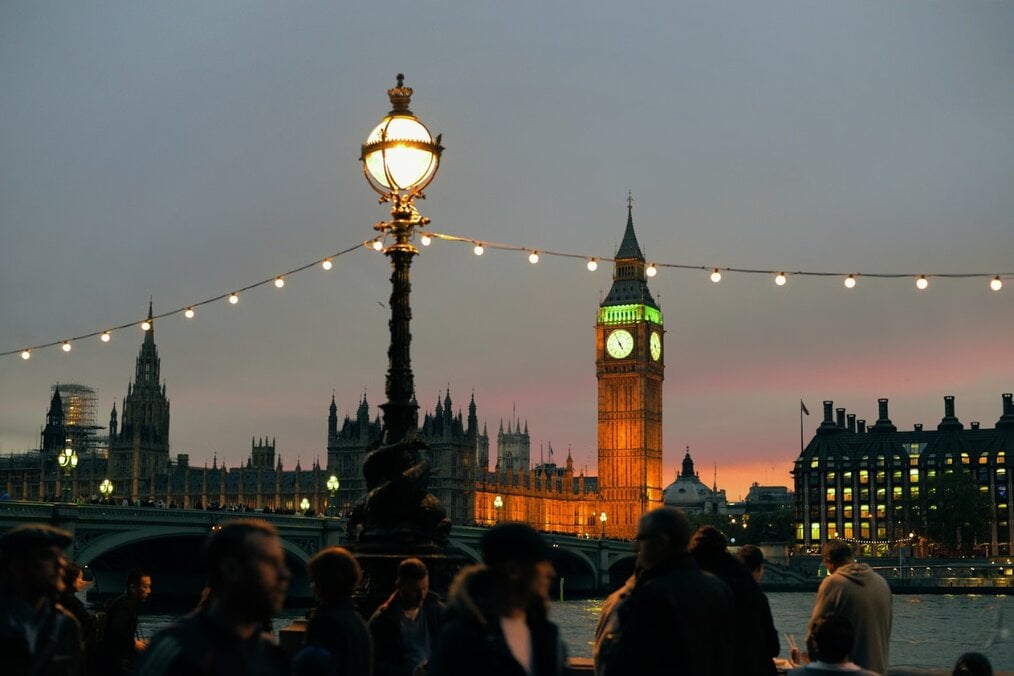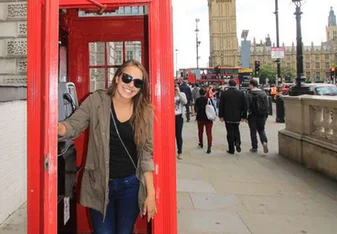
Everything You Need to Know About High School in England as an International Student
Interested in studying abroad in England as a high school student? From school structure to extracurriculars, here’s everything you need to know about high school study abroad in England.
Key Takeaways 🔑
- High school in England is referred to as “Secondary school” and there are various types of secondary education.
- Students in England are required to take the GCSEs and A-Level exams in order to attend a UK university after secondary school.
- Schools in England have more frequent breaks, compared to high schools in the US. In England, students are given two weeks for Christmas break, two weeks for Spring break, and six weeks for Summer, as well as one week holidays in October, February, and May.
- Parents should stay up-to-date on everything going on in England, to help you and your child feel more comfortable. Visit the U.S Bureau of Consular Affairs to view fact sheets, Embassy & Consulate locations, vaccination requirements, travel advisories, and more.

England’s emphasis on providing excellent education and creating well-rounded students is clear, so you can rest assured knowing that you have chosen a great location for high school abroad.
However, studying abroad for a semester or a year requires preparation. Whether you want to know the difference between high schools and secondary schools, classroom culture, sports culture, or what time is lunch, we’ve got you covered!
Read on to find out everything you need to know about high schools in England.
Things you need to consider for studying in England
To help you decide when and where to attend high school in England, consider the following factors:
- Location: There’s plenty of variety when selecting a place to study in England. Whether you want to embrace the economic hub of London, Brighton’s coastline, York’s medieval streets, or the northern hub of Manchester, each location has unique characteristics with its people, landscape, and lifestyle.
- Time of year: Be sure to consider when you’ll study in England. England often has warm summers and cold winters, and it rains consistently throughout the year. Northern England is slightly colder and wetter than the southern regions of England. Be sure to pack accordingly!
- Type of school: Students can study at government schools or private schools while studying in England. However, government schools also come in varying forms.
Different kinds of high schools in England
“High school” - or simply “secondary school” in England, comes in varying forms. The most common forms of secondary schools in England are “community schools”.
- Community Schools: The most common form of public or government school in England. Community schools are controlled by the local council and follow the national curriculum.
- Academy Schools: Similar to community schools, academy schools are government-funded. However, they can operate based on their unique curriculum.
- Free Schools: These are non-profit organizations funded by the government and are allowed to deviate from the typical curriculum
- Grammar schools: Another form of government school, however, students must reach a certain score to be admitted. This type of school is based on academic ability and is becoming less common in the UK.
- Private schools: Also known as “independent” schools, these secondary schools charge student fees and don’t have to follow the national curriculum.
Understanding school terminology & lingo in England

While English school systems don’t deviate too much compared to US schools, there’s much to unpack with the lingo. Is secondary school high school? Is there even a middle school?
Here’s what you need to know about school lingo in England:
- Secondary school is high school: In England, “high school” is referred to as a “secondary school”. High school in England - or secondary school - ranges from grades 7 to 11. Students go to college in grades 12 and 13.
- College isn’t university: People in the US typically say “college” when discussing university. However, in England and the rest of the UK, “college” refers to “sixth form” which is the two years of education before you enter university. To simplify it, “college” and “sixth form” are grades 12 and 13, and are non-compulsory.
- Sixth form is “college”: There are different types of colleges in England. Students can go to college at the same place where they studied in secondary schools, and this is called a “school sixth form”. Otherwise, students can leave their current schools after grade 11, and enter a college sixth form.
Uniform policies in England
There is often a special emphasis on uniforms when studying at a high school in England. The British government believes that uniforms play an important role in contributing to the school’s ethos and therefore encourages schools to provide uniforms.
While some students may not like the idea of wearing a school uniform, there can be many benefits. Firstly, it stops students from overthinking their fashion choices and worrying about what others think about their clothing!
Unfortunately, wherever you study in the world, students can be susceptible to the judgments of others. However, wearing a uniform can prevent worrying about or insecurity due to fashion differences which may even signify wealth disparity.
Uniforms and policies will vary from one school to the next. One school may require its students to wear formal blazers, whereas another may consist of a polo shirt or a buttoned shirt.
Parents typically buy their children’s uniforms and books at a local store. However, low-income families may receive school support through vouchers, discounts, or donated uniforms.
School day schedule/timetable in England
What time does school start in England, you ask? The typical secondary school timetable in the UK is from 8:30 am until 3:30 pm. If you are at college or school sixth form, you may not be requested to be in school while you have free periods throughout the day.
However, grades 7 to 11 are likely to have a full timetable from 8:30 am to 3:30 pm. School hours may vary slightly from one to the next.
British school hours typically consist of:
- 8:30 am: Registration or assembly
- 9:00-11:00 am: Lessons 1 & 2
- 11:00 am: Break (15 mins)
- 11:15 am: Lesson 3
- 12:15 pm: Lunch break
- 1:15 pm: Lessons 4 & 5
- 3:30 pm: Home time
Secondary schools offer a large range of extracurriculars
Almost all British high schools offer diverse extracurriculars including sports, music, arts, cultural clubs, and academic groups. The UK puts a good deal of emphasis on groups such as student government, competitive scholastic clubs, and similar activities that foster knowledgeable and well-rounded students. Depending on these extracurricular activities, they may go towards college or university credit for the student.
Athletics and physical education

In England, students until the age of sixteen must take part in physical education. However, there is much less emphasis on athletics than in the US. Students are typically only required to take part in 1-2 hours of athletics or P.E. a week, as most schools don’t emphasize their athletic programs as intensely.
While there is far less emphasis on sports or athletics in the English school curriculum, sports are still popular in England. Most students take part in sports outside of school, with football, rugby, cricket, rowing, netball, and running being particularly popular among students in England.
Schools will vary in what sports they offer their students depending on their facilities. If a school doesn’t provide rowing or tennis facilities, students will find opportunities at their local sports club.
Exams you’ll need to take in England
While studying at a high school in England, you’ll need to take exams in grades 10, 11, 12, and 13 if you continue with your education in sixth form.
- GCSE exams: In grades 10 and 11, you’ll complete the General Certificate of Secondary Education (GCSE) exams. These exams include subjects such as Maths, English, and Science, as well as specialized subjects you decide to take. Having good enough GCSE grades will help you enter college sixth form or school sixth form.
- A-Levels: In grades 12 and 13, you’ll take on A-Levels. These only consist of the unique academic subjects that you have chosen to specialize in. A-level grades determine which universities you’ll be able to study at.
- BTEC: Alongside GCSE and A-Level studies, students can take Business and Technology Education Council (BTEC) subjects - which incorporate practical learning with studying. BTECs are vocational qualifications and include a range of subjects from business to health. Earning this qualification can help boost the amount of college or university credits students have, allowing them to go to better schools.
School holidays in England
While school holidays vary based on the type of secondary school you attend, most schools follow the same terms and run for 39 weeks, from September to July.
However, unlike the US, where high school students participate in a long, two-month summer break, the schools in England have brief, frequent breaks spread throughout the school year. Typically secondary schools will have a two-week school holiday for Christmas and Easter, then a six-week summer holiday from July to September.
Study abroad in England!
Now you know more about what to expect when studying at a high school in England! While each location and school will be different, it is best to prepare by researching some types of schools, British school hours, cultural quirks, and more, to get a head start and embrace a new culture. England is a country that is home to many prestigious schools, and gaining an education here can significantly develop your academia.
Continue preparing for your high school abroad adventure:









